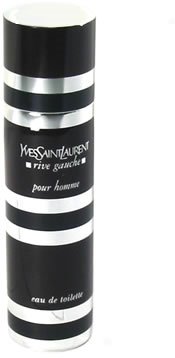Fleeting Glimpse: Vera Wang for Men

People want a fragrance to smell good. Pretty basic. I think that probably second on their list of wants is that they want it to last a decent amount of time on their skin. If you read comments about fragrances on Basenotes or Makeup Alley, it's a complaint you see over and over again: smells good, lasts about five minutes.
That's not usually a problem for me. Most scents stay with me for a pretty long time. I don't know if it's because of the scents I wear (lots of dark scents, orientals and chypres, things with plenty of base notes in them) or because my skin just likes to hang onto the molecules, but I find for the most part that even fairly light scents tend to stick with me.
There is, of course, the occasional exception, and Vera Wang for Men* is one of them.
After the lemony opening tumult (it smells like lemons to me, though the official top notes are green mandarin leaf and the Japanese citrus fruit yuzu), the scent settles down to a nice leathery masculine brew, slightly spiced and bearing a burly overtone of pipe tobacco. It's not anything out of the ordinary, but it's a pleasant, well-done men's scent (in a nice bottle, a clever remake of the women's version).
And then, nothing. It just fades away. After less than an hour, I can still smell it if I press my nose to my skin, but that's not what people mean when they talk about lasting power. If six or eight hours after application, I catch a recognizable thread of the scent when I bring pick up the phone receiver, or someone in my immediate orbit can get a pleasant whiff of it, then that's a fragrance with lasting power. Vera Wang for Men is without a doubt the most evanescent mainstream scent I've ever experienced.
There are lightweight, throwaway scents like the Demeter line that have very little lasting power, and I don't expect them to last all day: they're colognes, refreshers, fun little novelties. But a relatively high-end scent has to have some life to it. (Even the light, crystalline Bulgari Eau Parfumée au Thé Vert lasts four to six hours on me.) It doesn't have to be--shouldn't be--overpowering. It doesn't have to last until the next day (though that's always a nice bonus). But it has to be there for at least a few hours, or what's the point?
*Liz Claiborne calls her men's line just Claiborne. The women's version of Spark is by Liz Claiborne, but the bottle for the men's version just says Claiborne. I wish Vera Wang had done that, and given us Wang for Men.




